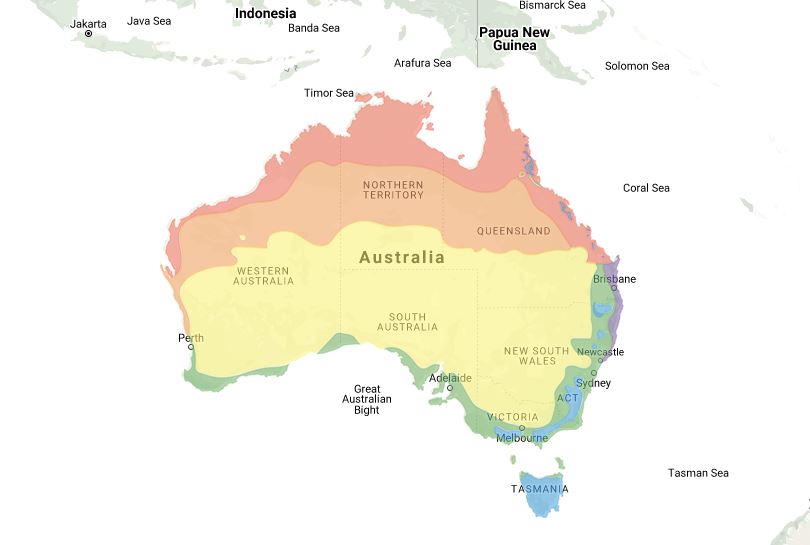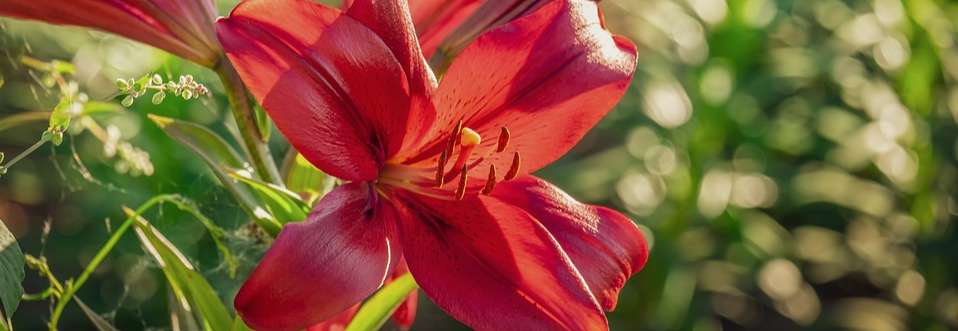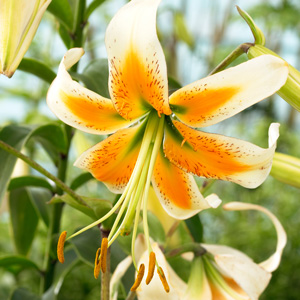Lilium Planting and Care Guide
Growing Guide for Lilium or Lilies
About Lillies
Also known as liliums, lilies (flower) are tall perennials prized for their graceful blooms, which often feature an intoxicating fragrance. These summer-flowering beauties grow well as clusters in pots and beds. There are many types to choose from, including Oriental, Asiatic, Trumpet and Longiflorum, plus hybrids such as Longiflorum/Asiatic and Oriental/Trumpet.
Taxonomy
Lilium is a genus in the family Liliaceae.
Note that there are many plants with the word ‘lily’ as part of their common name, and not all of these are ‘true lilies’ in botanical terms. For example, arum lilies are in the family Araceae, while belladonna lilies and Lily of the Nile (agapanthus) are in the family Amaryllidaceae. For this reason, many gardeners prefer the word ‘lilium’ for true lilies. The growing information here applies to true lilies or liliums.
- Botanical Name – Lilium spp
- Family Name – Liliaceae
- Plant type – fleshy bulb
- Flowering – summer
- Size – 70 cm to 180cm depending on variety.
How To Grow Lilies
Climatic Zones for Liliums
Lilies grow in all climatic regions of Australia, from cool through to tropical. It is best to see the individual products for detailed climate information.

Lilium Climate Map
When To Plant Liliums
The ideal planting time for lilium bulbs is from winter into spring.
Where To Plant Liliums
The best positioning for most liliums is full sun to part shade. Oriental lilies prefer a cooler, more sheltered position, and may require protection from hot sun and hot winds. All taller varieties may need staking to support the stems, particularly in open areas where there is less protection from wind.
These plants work best in clumps or clusters and are happy alongside azaleas, camellias and smaller rhododendrons and camellias. They’re ideal for pots and, due to their height, they’re also suited to the backs of beds.
Soil Preparation
Liliums like moist soil but do not like wet feet, so the soil needs to be open and well-drained. Drainage can be improved by planting on a slight slope, raising beds or planting in raised mounds of soil.
For the enthusiast, we recommend a soil mix of 2 parts sandy loam, 2 parts peat and 1 part sand. Some varieties, such as the Double Tiger Lily, are a little less fussy about soil type.
For growing in pots, use a bulb-specific potting mix.
When Your Bulbs Arrive
Plant immediately after delivery, and do not allow the bulbs to dry out. This is very important, as lilies do not have a dormant cycle like many other bulbs.
How To Plant Liliums
Lilies are a real companion plant and rely on growing in clusters to grow properly. Whether in pots or garden beds, you should generally plant a cluster.
- Garden planting: plant 20-40cm apart at a depth of 10-20cm. Top the soil with a compost-type material such as well-rotted animal manure. Alternatively, use a complete fertiliser containing NPK, or a blood and bone fertilisers. Water in and mulch well.
- Pot planting: use a deep pot of minimum 200mm diameter. Plant up to 3 bulbs per pot at around 75mm apart. Placing the bulbs so that they lean slightly inward will encourage mutual support of tall stems, and inserting a stake in the centre will create a central support as they grow. Position outside in a sunny aspect (pots can be brought inside or onto a patio once they’re flowering).
Maintenance
Lilies need to be kept moist during their growing cycle, and respond well to generous watering in summer. Mulching will help conserve water to keep the soil cool and moist.
Ideally, lilies should be fertilised at least twice during their growing cycle. Applying liquid fertiliser once plants are setting buds (i.e. when small buds appear in the apex of the leaves) will help keep lower foliage green. Fertilise the bulbs again after they have finished flowering to promote flowering the following year. In subsequent years, top dress with fertiliser in late winter.
For potted lilies, top-up fertiliser when flowering is finished, and place the pots in the garden to be watered with everything else while they die down. Bring the pots out again in early winter, top dress with fertiliser, water in well and watch them grow again.
After flowering (or when cutting flowers for display), cut about halfway down the stem. Enough leaves should remain for the bulb to develop, so that it can produce flowers the following year.
Prune plants down to ground level once the foliage has died off completely, but no earlier. Bulbs can be left in the ground to naturalise for several years without having to transplant them. If you are planning to lift and separate your bulbs, this should be done in autumn. Replant without delay. Liliums dislike being moved and wet feet.
They are generally pest resistant; aphids may be a problem but easily dealt with.
Recommended Varieties
Garden Express stocks a huge range of Lilium varieties including:











